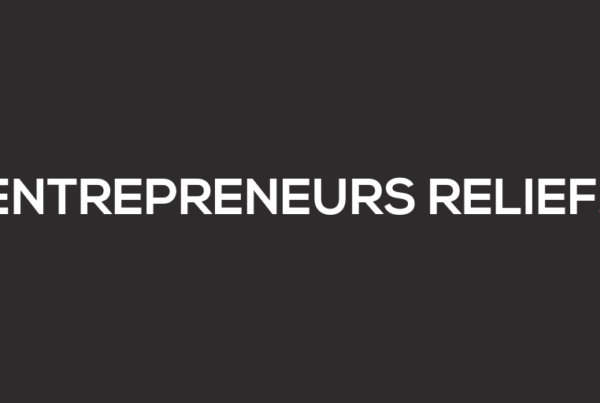The VAT Flat Rate Scheme – an easier way to handle your VAT
The VAT Flat Rate Scheme was introduced back in 2002 as a way of simplifying your VAT records and obligations.  Uh oh…have we lost you already? We know that things like ‘VAT’ and terminology such as ‘flat rate schemes’ probably sound quite dull. We don’t intend them to be. But as your accountants, it’s important that we alert you to elements of tax and accounting and VAT that will help you run a better business – and make things easier.
Uh oh…have we lost you already? We know that things like ‘VAT’ and terminology such as ‘flat rate schemes’ probably sound quite dull. We don’t intend them to be. But as your accountants, it’s important that we alert you to elements of tax and accounting and VAT that will help you run a better business – and make things easier.
In this case, the VAT Flat Rate Scheme does make things easier. It cuts down on your paperwork, reduces the time you spend on bookkeeping and can, potentially, earn you a bit of extra income along the way (always good news for any business!).
Sounds too good to be true? Let’s see how it works…
So, let’s have a look. (If you’re already tuning out but it sounds like it could be helpful, just get in touch with us to find out whether it could help you.) The flat rate scheme is relatively easy to use. As the name suggests, it’s based on a single ‘flat rate’ percentage that’s applied to your gross sales to calculate your liability.
Once you’re registered for the scheme, you remove the need to record and analyse out the net, VAT and gross amounts from each of your purchase invoices ready for your VAT return – saving you an awful lot of time and effort in the process. Instead, you’re only required to record these details from your sales invoices. So, in theory, if your sales invoices are raised directly from your accounting software this will be done for you automatically – and that’s going to boost your time savings even more!
Now for the easy part… calculating your liability. To work out your liability for the quarter you just take your gross sales for the period and multiply this by your allocated flat rate percentage (this is determined by the industry sector that you work in but typical percentages range from 4% to 14.5%). The figure you arrive at is your liability and this will then be paid to HM Revenue & Customs (HMRC). It really is that simple – easy, and indeed, peasy!
What’s in it for your business?
Some questions to ask yourself include:
- Does your company mainly provide services to customers?
- Do you have very little expenditure in terms of purchases that have VAT applied to them?
If so, then you could potentially make a financial gain from being on the flat rate scheme. The saving comes through you paying your VAT liability at a discounted rate. This is based on your sales invoices being raised with a VAT rate of 20%, but your liability is calculated as a percentage of your gross sales up to a maximum of 14.5% – the difference between the two amounts is then extra income for your company and more money in the bank!
What’s more, if you apply for the scheme within 12 months of your VAT registration then you’re eligible for a further 1% reduction on your flat rate percentage. Not too shonky, eh! (Again, if we’ve got rather excited and carried away with accounting terminology, bear with us. Or get in touch.)
How does this work in reality?
Let’s look at how this could work in reality: ABC Ltd is a VAT-registered company.
- They’ve applied for the VAT Flat Rate Scheme and have been given a flat rate percentage of 13%.
- This has been discounted to 12% as it’s their first year of registration.
- In their first quarter they’ve raised invoices totalling £25,000.
- VAT has been applied to these invoices at a rate of 20%. This works out to £5,000.
- Overall, ABC Ltd’s gross sales are £30,000 for the period.
To calculate their liability we take the £30,000 gross sales and multiply this by 12%. Total VAT liability for the quarter – £3,600 So the difference between the VAT charged and the VAT liability is a total of £1,400. That’s £1,400 extra income that ABC Ltd has gained just by signing up for the scheme – certainly better than a slap round the face with a wet fish, eh?
Worried you may lose out on those large purchases?
Are you thinking about making any large purchases in the future? Maybe you’ve got your eye on some shiny, new equipment or you’ve been eyeing up the new MacBook and trying to justify upgrading your laptop. If so, don’t worry – all is not lost. When you spend over £2,000 on capital purchases you can make some additional savings. This can include capital expenditure on purchases of equipment for your office/studio or computer/hardware equipment.
The total cost needs to be equal to or exceed £2,000 (this can include VAT) and all items have to be listed as one purchase. But if you meet these requirements then, in addition to the flat rate saving, you can also reclaim the VAT on these items too!
What’s the catch?
So, signing up for the VAT Flat Rate Scheme seems like a no brainer, right? But as with any profits that your company makes, HMRC will want a slice of the pie too (…yum, pie!) Any gains that you make from the scheme will form part of your overall income and net profit, so you’ll need to pay corporation tax on this amount. But, overall, you’ll still be making a gain and increasing your bottom line.
Finally, there’s one small limitation you need to bear in mind before deciding if you are ready to join the scheme: You can only join the flat rate scheme if you predict your turnover will be less than £150,000 over the next 12 months. But once you’re accepted on to the scheme, you’re able to earn up to £230,000 before you’d have to leave.
So, all things considered, the VAT Flat Rate Scheme is definitely worth looking into if you can meet the requirements we’ve laid out above. It’s simple, it’s easy to calculate your liability and it could increase your income at a stroke. Now, back to drooling over that super-thin new MacBook…





